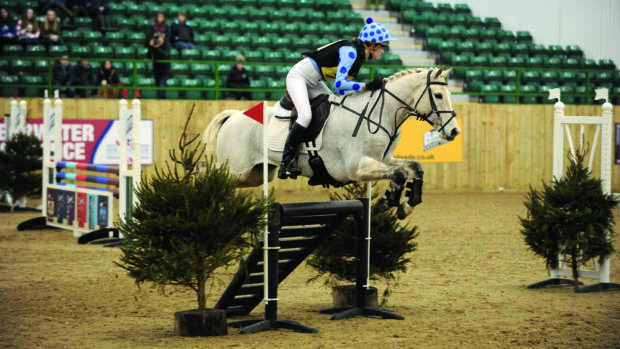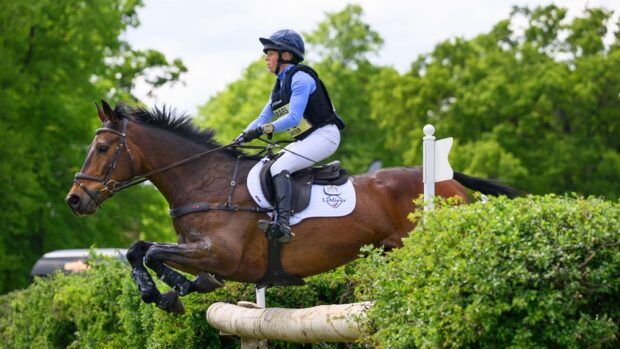Alex Whewall is a five-star event rider based near Bristol. He is a regular on the national and international circuits with a string of self-produced horses. Alex was the 2016 British Eventing intermediate champion with Chakiris Star and they went on to finish 19th in their first CCI5* at Pau in 2017. Here he explains to to avoid penalties at corner fences.
Training the stars
My retired three-star (now four-star) horse Salt And Pepper was quite keen and strong at corners, which made them tricky. He was so quick that he’d be strong and wobbly and not concentrate. It was vital for me to keep him on his line and get him to focus on where he was going.
I had to keep him between hand and leg so he didn’t get too strong and rush past the fence. It took a lot of setting up and keeping him straight, but we cracked it eventually and I took him from novice to three-star.
Corners are a test of accuracy, obedience and straightness — they can quite easily catch you out if you’re not prepared. They should be straightforward — your horse should be between your hand and leg, and you should be focusing on the line. It’s all about preparing the way you approach the corner rather than jumping the fence.
How to avoid penalties at corner fences
1. Begin by building a low corner fence with two normal height wings and a short one (or use a small barrel as the third wing). Rest a guide pole at the point of the corner to help channel your horse into the fence and minimise the chance of a run-out.
2. While you warm up, ride transitions within the canter to make sure your horse is on your aids. This is crucial as you need to be able to increase or decrease his strides between fences.
3. Approach the corner in a balanced, powerful canter with your horse between your hand and leg. Look up and focus on something in the distance to keep you both on your line. Focusing on something ahead will help keep you straight, which will keep your horse much straighter over the fence.
4 Once he is jumping this confidently, increase the angle and the height of the corner to make the question a little tougher.
5. Remove the guide pole once you have jumped the corner confidently on both reins. Your horse should be jumping straight and with confidence. If he starts to wobble or feel like he’s drifting out, bring back the guide pole.
Like this? You might also enjoy reading these:
#SundaySchool: Jumping a horse on an angle with Francis Whittington
#SundaySchool: how to improve control with Blyth Tait
Subscribe to Horse & Hound magazine today – and enjoy unlimited website access all year round
Things to consider…
- Avoid over-thinking corners because this can make you over-ride them. Keep it simple and concentrate on your approach rather than the fence you are jumping.
- Ensure you have a good canter on your approach, with your horse sitting back on his hocks and listening to you. Stay straight and focus on where you want to take off, maintaining power.
- If your horse is consistently running out at corners, go back to basics. Check for any discomfort to rule out a pain-related issue.
Horse & Hound magazine, out every Thursday, is packed with all the latest news and reports, as well as interviews, specials, nostalgia, vet and training advice. Find how you can enjoy the magazine delivered to your door every week, plus options to upgrade to access our H&H Plus online service which brings you breaking news as it happens as well as other benefits.




